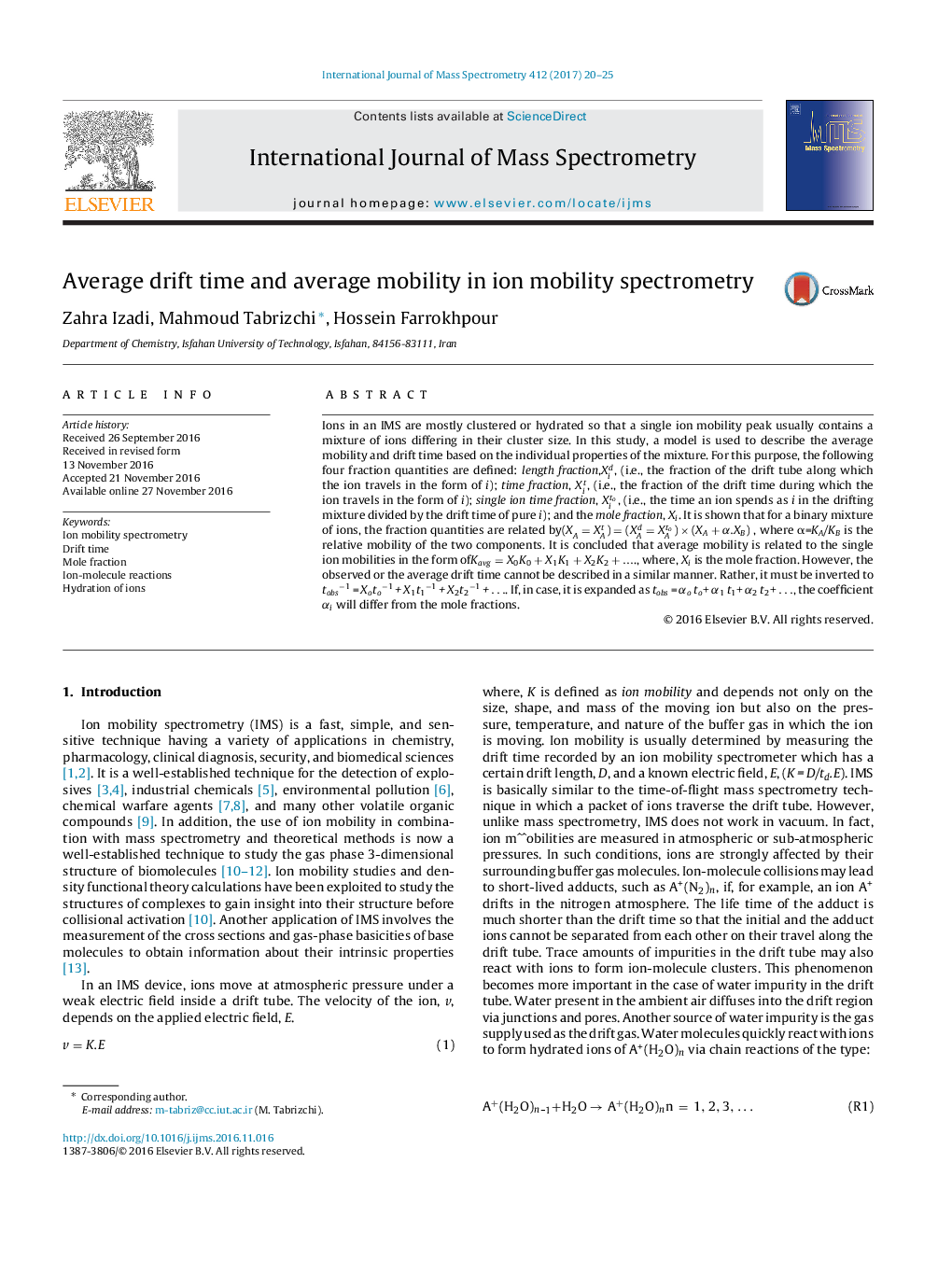| Article ID | Journal | Published Year | Pages | File Type |
|---|---|---|---|---|
| 5134259 | International Journal of Mass Spectrometry | 2017 | 6 Pages |
â¢Ions in an IMS are mostly clustered or hydrated.â¢A model is used to describe the average mobility and drift time.â¢Four fraction quantities are defined.â¢Average mobility is related to the single ion mobilities in the form ofKavg=X0K0+X1K1+X2K2+..., where, Xi is the mole fraction.
Ions in an IMS are mostly clustered or hydrated so that a single ion mobility peak usually contains a mixture of ions differing in their cluster size. In this study, a model is used to describe the average mobility and drift time based on the individual properties of the mixture. For this purpose, the following four fraction quantities are defined: length fraction,Xid, (i.e., the fraction of the drift tube along which the ion travels in the form of i); time fraction, Xit, (i.e., the fraction of the drift time during which the ion travels in the form of i); single ion time fraction, Xito, (i.e., the time an ion spends as i in the drifting mixture divided by the drift time of pure i); and the mole fraction, Xi. It is shown that for a binary mixture of ions, the fraction quantities are related by(XA=XAt)=(XAd=XAto)Ã(XA+α.XB) , where α=KA/KB is the relative mobility of the two components. It is concluded that average mobility is related to the single ion mobilities in the form ofKavg=X0K0+X1K1+X2K2+...., where, Xi is the mole fraction. However, the observed or the average drift time cannot be described in a similar manner. Rather, it must be inverted to tobsâ1 = Xotoâ1 + X1t1â1 + X2t2â1 + â¦. If, in case, it is expanded as tobs = αo to+ α1 t1+ α2 t2+ â¦, the coefficient αi will differ from the mole fractions.
Graphical abstractDownload high-res image (106KB)Download full-size image
